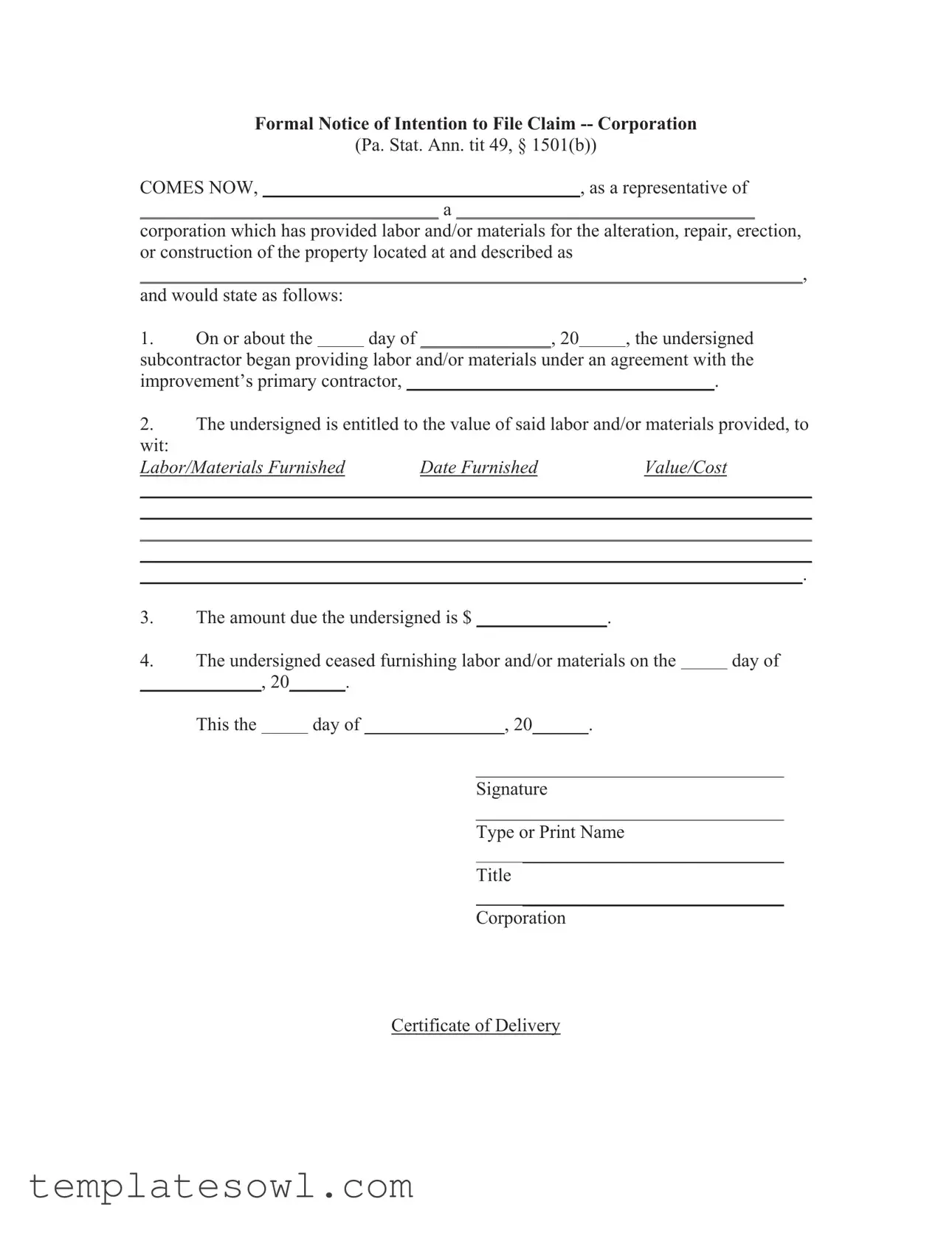Formal Notice of Intention to File Claim -- Corporation
(Pa. Stat. Ann. tit 49, § 1501(b))
COMES NOW, __________________________________, as a representative of
________________________________ a ________________________________
corporation which has provided labor and/or materials for the alteration, repair, erection, or construction of the property located at and described as
_______________________________________________________________________,
and would state as follows:
1. On or about the day of ______________, 20 , the undersigned
subcontractor began providing labor and/or materials under an agreement with the improvement’s primary contractor, _________________________________.
2.The undersigned is entitled to the value of said labor and/or materials provided, to
wit:
Labor/Materials Furnished Date Furnished Value/Cost
________________________________________________________________________
________________________________________________________________________
________________________________________________________________________
________________________________________________________________________
_______________________________________________________________________.
3.The amount due the undersigned is $ ______________.
4. |
The undersigned ceased furnishing labor and/or materials on the |
|
day of |
_____________, 20______. |
|
|
|
This the |
|
day of _______________, 20______. |
|
|
_________________________________
Signature
_________________________________
Type or Print Name
____________________________
Title
____________________________
Corporation




 Mailing a true and correct copy of same by first class registered or certified U.S. mail, postage prepaid, return receipt requested to
Mailing a true and correct copy of same by first class registered or certified U.S. mail, postage prepaid, return receipt requested to